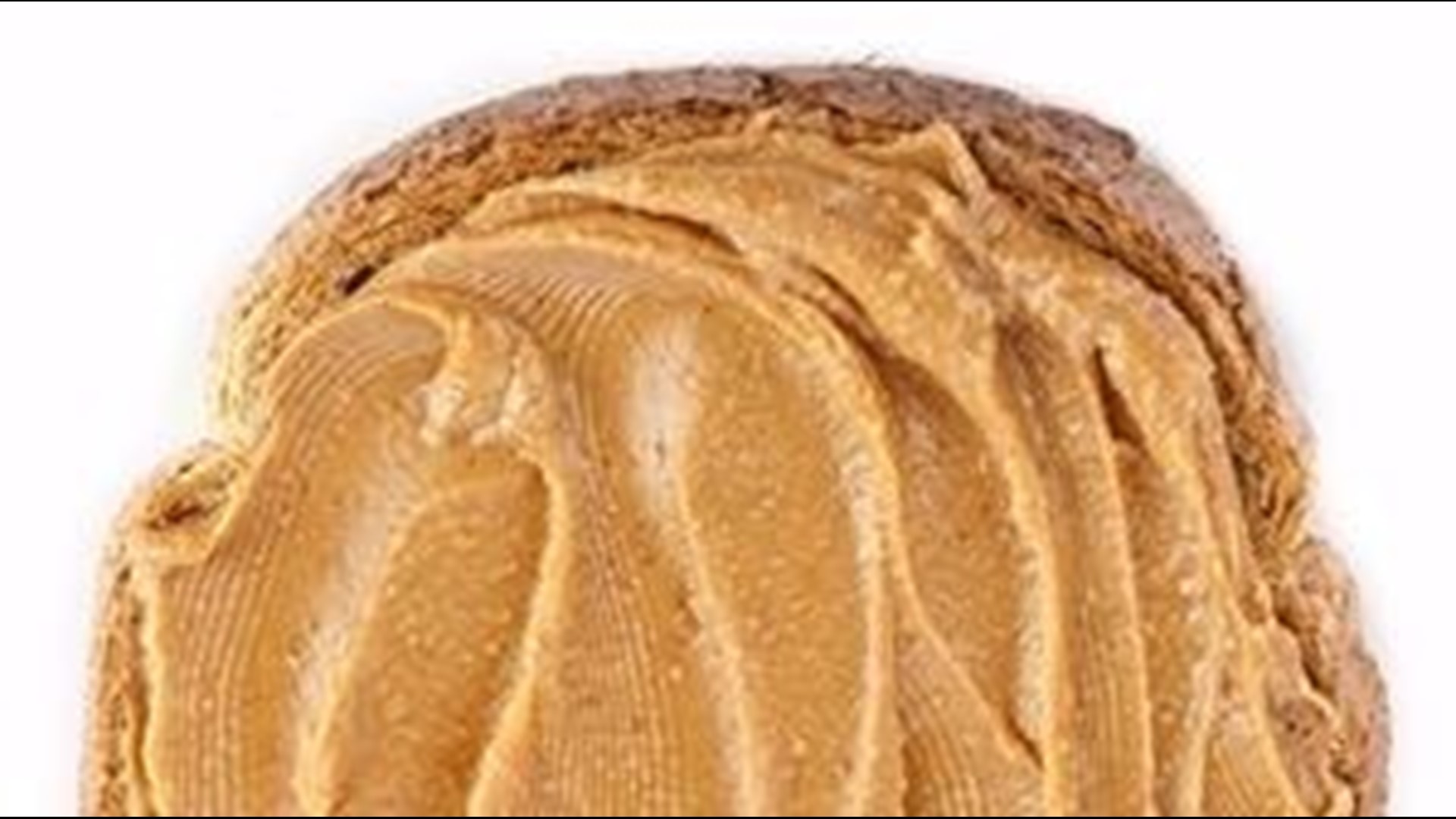WASHINGTON — With the recent news that Jif is recalling several different peanut butter products due to a potential salmonella contamination, people across the country are trying to figure out if their peanut butter is recalled and what exactly to do next.
According to the CDC, there are 14 confirmed cases of the salmonella strain linked to the recalled peanut butter, but the true number of illnesses is likely higher.
If your peanut butter is involved in the recall, read up here to know exactly what to do to keep you and your family safe and healthy.
Which peanut butter is recalled?
J.M. Smucker issued a voluntary recall for dozens of products covering a wide range of sizes with lot code numbers between 1274425 – 2140425. The recalled peanut butter varieties include creamy, crunchy, natural honey, reduced fat creamy and many others. A full list of the recalled items can be found on Jif's website.
To find the lot codes, look for the "Best If Used By date." There you'll find the date and a string of numbers underneath. Those are the numbers you're looking for, they are the lot code numbers. The recalled lot codes include "425" at the end of the first seven numbers, which signifies it was manufactured in Lexington, Kentucky.
According to a CDC food safety alert, investigators are working to determine whether additional products may have been contaminated.
What should I do with my recalled peanut butter?
J.M. Smucker, the Food and Drug Administration (FDA) and the Centers for Disease Control (CDC) all recommend to throw out any recalled peanut butter and do not eat or serve it.
Because peanut butter has a very long shelf life, be sure to check all Jif peanut butter you have at home to check whether it's part of the recall.
Do I need to clean utensils, plates and surfaces that touched the recalled peanut butter?
Yes. According to the CDC, salmonella can transfer onto other surfaces if there is contact with the contaminated food. The agency recommends to wash any surfaces and utensils that made contact with the food with hot soapy water and then sanitize them with a solution of one tablespoon of bleach to one gallon of water. These should then be rinsed with water.
Should I cook my peanut butter instead of throwing it out?
No. The risk of getting sick from these products is high and you should be "better safe than sorry," according to FoodSafety.gov. While heating food to high temperatures could potentially kill the bacteria, peanut butter needs to be cooked evenly throughout for 40 minutes and will often lose its quality when cooked for that long, according to a food microbiology professor at the University of Georgia.
Will I get a refund for the recalled peanut butter?
Customers are asked to provide their information through Jif’s online contact form “due to especially high call volumes.” The company will then review the information and “provide the appropriate reimbursement,” the spokesperson said.
VERIFY asked whether people would be reimbursed through cash, check or a voucher, but did not receive additional information.
Some grocery store chains including Costco, Meijer, Publix, Giant, and Food Lion are also providing customers with refunds if they purchased Jif peanut butter at one of their stores.
In addition to the recalled products, Albertsons, which owns grocery store chains like Safeway and Vons, is recalling 11 store-prepared items that contain Jif peanut butter. Anyone who purchased these items can also get a refund, the company said in a press release.
What is salmonella?
Salmonella can cause serious and sometimes fatal infections in young children, frail or elderly people and others with weakened immune systems, according to the FDA. Healthy people infected with salmonella often experience fever, diarrhea (which may be bloody), nausea, vomiting and abdominal pain.
The CDC estimates that the bacteria causes about 1.35 million infections, 26,500 hospitalizations, and 420 deaths in the U.S. every year.
Megan Loe from VERIFY contributed to this report.

